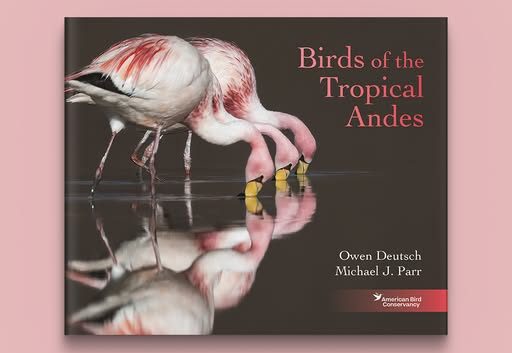PROTECT YOUR DNA WITH QUANTUM TECHNOLOGY
Orgo-Life the new way to the future Advertising by AdpathwayWith wings beating at an astonishing rate, hummingbirds seem to hang suspended in mid-air, a jewel-like blur of motion. It’s a moment everyone would love to capture. However, for many backyard birders, this spectacle can become a source of confusion and even concern when a hummingbird hovers right in front of a feeder but fails to drink.
You’ve set up your feeders with the perfect sugar-water ratio, you’ve kept them clean, and they’re in a prime location. So why is this tiny, high-energy bird performing its amazing aerial dance without taking a sip?
 Photo by Aleksandar Popovski
Photo by Aleksandar PopovskiThe Territorial Tyrant
The most common reason a hummingbird is hovering near a feeder without drinking is that it’s acting as a territorial guard. Hummingbirds are incredibly aggressive for their size, and their lives revolve around protecting their food sources. A hummingbird needs to consume its body weight in nectar and insects every day to survive, so a reliable food source is a matter of life and death.
A single male hummingbird, or sometimes a dominant female, will often claim a feeder as its own private buffet. It will perch on a nearby branch, a wire, or even the top of the feeder itself, acting as a sentinel. From this vantage point, it will launch aerial attacks on any other hummingbird that dares to approach. The hovering you see is often the bird’s way of staking its claim, a silent (or sometimes not-so-silent with chattering) warning to other birds. It’s showing that it owns this space and is ready to fight.
This territorial behavior is so deeply ingrained that hummingbirds will often fight over a feeder even when it’s full. They don’t seem to grasp that the sugar-water supply is seemingly endless; their instincts are wired to protect a finite resource, like a patch of wildflowers. If you see a hummingbird repeatedly hovering and then flying away, it’s often because a “bully bird” is chasing it off.
 Photo by Frank Cone
Photo by Frank ConeA Mating Dance in the Air
Sometimes, that mesmerizing hover isn’t a sign of aggression, but of affection. Hummingbirds are not monogamous and have complex, often dramatic, courtship rituals. The male hummingbird’s job is to impress a female with his physical prowess, and he often does this by performing an elaborate aerial display.
This can include flying in huge, pendulum-like arcs, diving from great heights, and then swooping up, all while creating a unique buzzing or chirping sound with his tail feathers. The hovering part of this dance often happens right in front of the female, who is typically perched nearby. He may face her, hover, and sing a high-pitched song to showcase his health and vigor. If you see two hummingbirds hovering and bouncing around each other in a frantic dance, it’s very likely a courtship ritual rather than a territorial dispute. The pair might be more interested in this social interaction than in feeding at that particular moment.
 Photo by Richard Sagredo
Photo by Richard SagredoThe Quality Control Inspector
Just like a human won’t drink spoiled milk, a hummingbird has a discerning palate. A hummingbird’s hovering behavior can be a sign that it is carefully inspecting the feeder or the nectar. Hummingbirds have a phenomenal memory and will remember not just where a food source is, but also its quality.
If the sugar solution is dirty, has started to ferment, or has developed mold, the hummingbird will know. They will often hover, take a quick taste, and then fly off in disgust. This is a clear signal to you that the feeder needs to be cleaned and refilled with fresh nectar. A simple recipe of one part refined white sugar to four parts water is all they need. Never use honey, artificial sweeteners, or red food dye, as these can be harmful. The hovering could also be a sign that the nectar level is too low to reach.
 Photo by Zdeněk Macháček
Photo by Zdeněk MacháčekJust Stopping By
Finally, sometimes a hummingbird is just, well, a hummingbird. These tiny birds are constantly on the move, and their hovering is a part of their natural behavior. They might be passing through your yard on their migration route, or simply scouting the area for food sources. They can spot a bright red feeder from a great distance, so they might be checking it out to see if it’s a worthwhile stop. They might even be looking for tiny insects, which are a critical source of protein, especially for females raising chicks.
 Photo by Zdeněk Macháček
Photo by Zdeněk MacháčekFinal Thoughts
A hummingbird’s hovering is a window into its fascinating world. It’s an aerial tool for everything from hunting and defense to courtship and pure survival. So the next time you see one hovering in your yard without taking a sip, take a moment to observe its behavior. Is it guarding a territory? Is it dancing with a potential mate? Or is it simply telling you that its meal is ready for a refresh? By understanding these tiny birds’ habits, we can be better hosts and get a deeper appreciation for their incredible lives.























 English (US) ·
English (US) ·  French (CA) ·
French (CA) ·